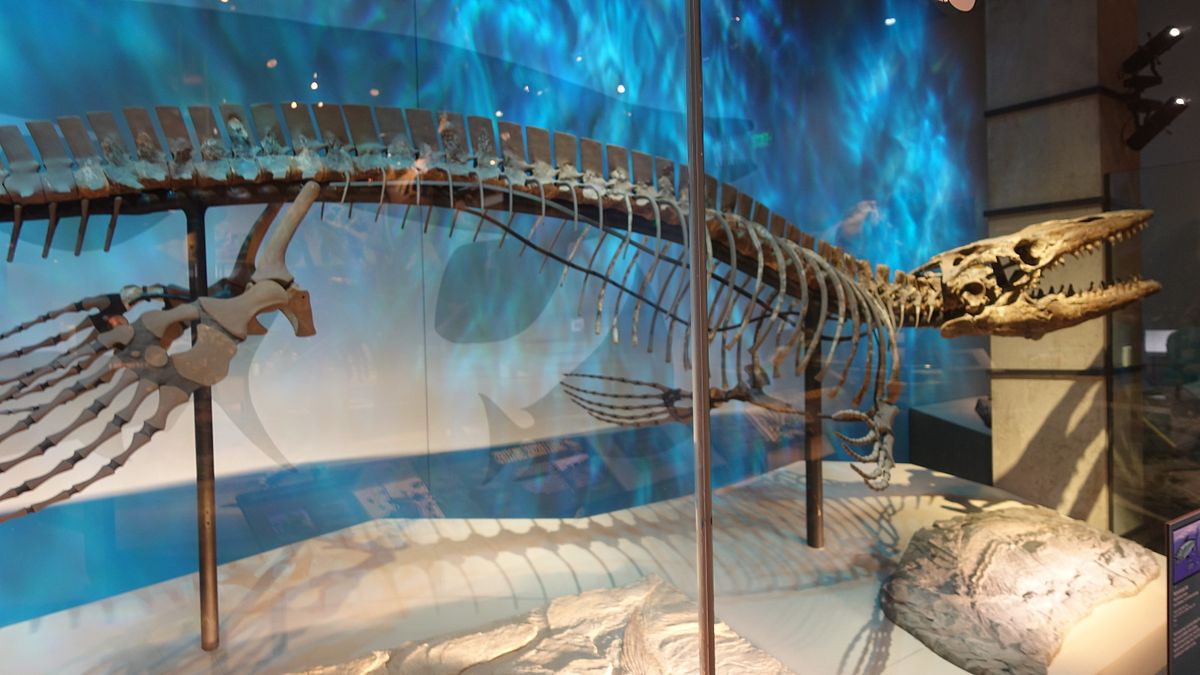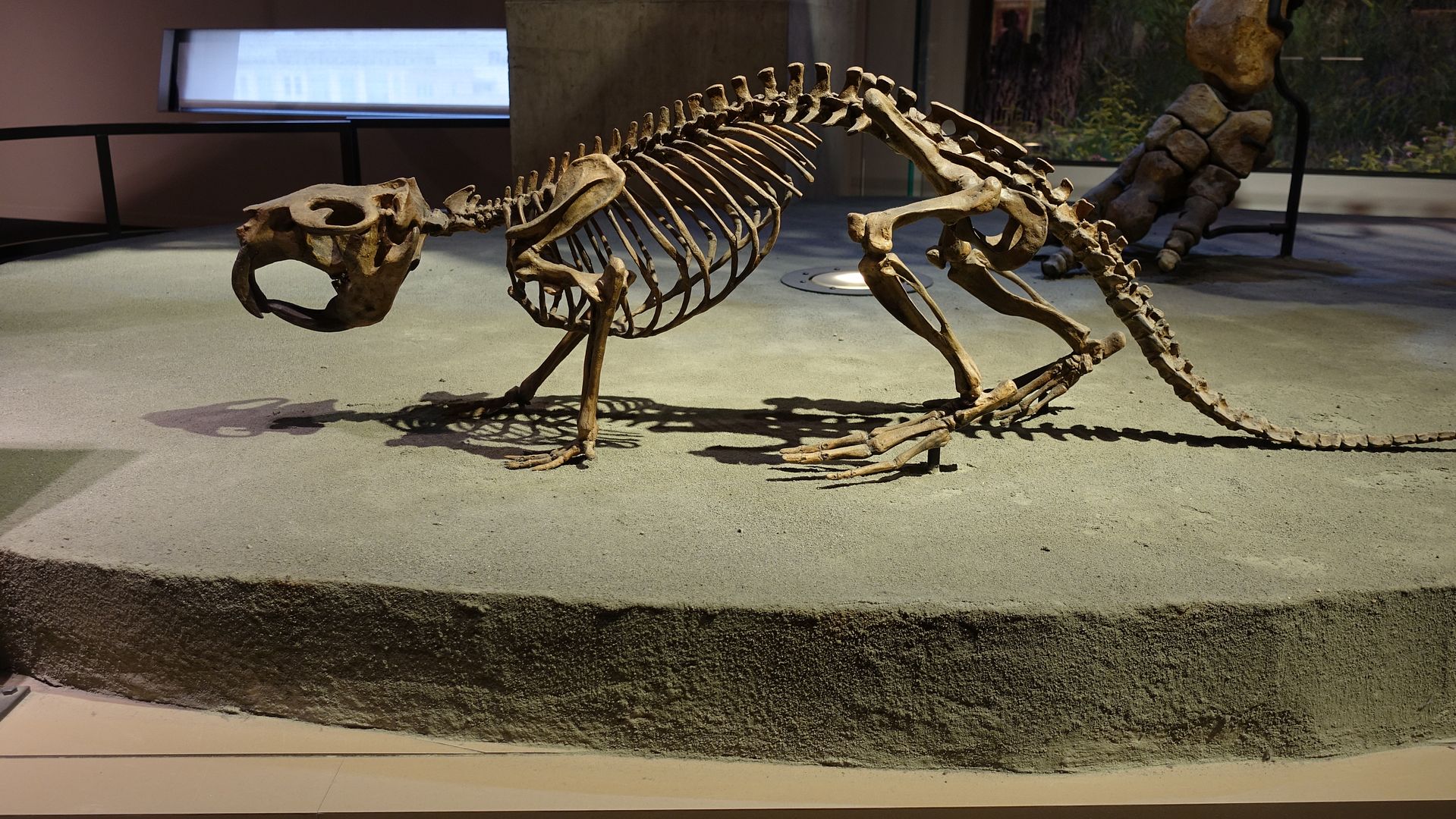You are using an out of date browser. It may not display this or other websites correctly.
You should upgrade or use an alternative browser.
You should upgrade or use an alternative browser.
Nasty Austrian🇦🇹 Conquers da 🇺🇸 & 🇨🇦
- Thread starter big oil
- Start date
This site may earn a commission from merchant affiliate
links, including eBay, Amazon, and others.
big oil
Race Dog
Close your eyes, imagine you're a hunter searching for food in what is today, Southwest Texas.
You round a tree, you see an Aussie hunter searching for sheep. ot:
ot:
You stare at the Aussie in a confused state, with a stank eye. atch:
atch:
All of a sudden, both of you stare at one another after hearing an enormous sound,
then a rancid wind blows passed, you're about to wretch, the Aussie seems to enjoy the aroma.
Unbeknownst to both hunters, an Alamosaurus was grazing nearby, its bowels turning,
they'd just been sharted (shit-farted) on, covered in Alamosaurus dung.
The ZA hunter runs for the nearest pool of water to wash off.
The Aussie hunter wipes a clump of shart off his face and smells it, then takes a taste atch:
atch:  ot: :ricky:
ot: :ricky:

You round a tree, you see an Aussie hunter searching for sheep.
You stare at the Aussie in a confused state, with a stank eye.
All of a sudden, both of you stare at one another after hearing an enormous sound,
then a rancid wind blows passed, you're about to wretch, the Aussie seems to enjoy the aroma.
Unbeknownst to both hunters, an Alamosaurus was grazing nearby, its bowels turning,
they'd just been sharted (shit-farted) on, covered in Alamosaurus dung.
The ZA hunter runs for the nearest pool of water to wash off.
The Aussie hunter wipes a clump of shart off his face and smells it, then takes a taste

big oil
Race Dog
Tyrannosaurus
tie-RAN-oh-sore-us
'tyrant lizard'
Type of dinosaur:
large theropod
Length:
12.0m
Weight:
7000kg
Diet:
carnivorous carnivorous food icon
Teeth:
60 saw-edged, bone-crushing, pointed teeth
Food:
other animals
How it moved:
on 2 legs
When it lived:
Late Cretaceous, 68-66 million years ago
Found in:
USA
The ultimate carnivore
Tyrannosaurus lives up to its reputation as one of the most fearsome animals of all time. Its powerful jaws had 60 teeth, each one up to 20cm (8 inches) long and its bite was around 3 times as powerful than that of a lion.
Bite marks found on Triceratops and Edmontosaurus fossil bones show that Tyrannosaurus could crunch through bone. Analysis of fossilised Tyrannosaurus dung show that it contained the bones of its prey.
Hunter or scavenger?
The Tyrannosaurus skull was over 1.5m (5 feet) long and the cavity that housed the part of the brain responsible for smell was relatively large.
Tyrannosaurus would have used its good sense of smell to hunt live prey and locate dead bodies to scavenge. It would have been able to scare off any other scavengers, so it didn't have to share.
Lone or pack hunter?
Some Tyrannosaurus fossils show bite marks from other tyrannosaurs, so it's clear that they fought each other, whether over food or mates.
We know that close relatives of Tyrannosaurus sometimes lived together because there are fossils of groups who were buried together, but we don't know for sure if they hunted alone, or in packs like lions and wolves do today. So far, no groups of Tyrannosaurus skeletons have been found.

tie-RAN-oh-sore-us
'tyrant lizard'
Type of dinosaur:
large theropod
Length:
12.0m
Weight:
7000kg
Diet:
carnivorous carnivorous food icon
Teeth:
60 saw-edged, bone-crushing, pointed teeth
Food:
other animals
How it moved:
on 2 legs
When it lived:
Late Cretaceous, 68-66 million years ago
Found in:
USA
The ultimate carnivore
Tyrannosaurus lives up to its reputation as one of the most fearsome animals of all time. Its powerful jaws had 60 teeth, each one up to 20cm (8 inches) long and its bite was around 3 times as powerful than that of a lion.
Bite marks found on Triceratops and Edmontosaurus fossil bones show that Tyrannosaurus could crunch through bone. Analysis of fossilised Tyrannosaurus dung show that it contained the bones of its prey.
Hunter or scavenger?
The Tyrannosaurus skull was over 1.5m (5 feet) long and the cavity that housed the part of the brain responsible for smell was relatively large.
Tyrannosaurus would have used its good sense of smell to hunt live prey and locate dead bodies to scavenge. It would have been able to scare off any other scavengers, so it didn't have to share.
Lone or pack hunter?
Some Tyrannosaurus fossils show bite marks from other tyrannosaurs, so it's clear that they fought each other, whether over food or mates.
We know that close relatives of Tyrannosaurus sometimes lived together because there are fossils of groups who were buried together, but we don't know for sure if they hunted alone, or in packs like lions and wolves do today. So far, no groups of Tyrannosaurus skeletons have been found.

big oil
Race Dog
Description from Tech Times:
Many scientists spent years traveling and digging to find remains of prehistoric animals but members of a family in Texas were not even looking for fossils nor making scientific excavations when they chanced upon a nearly intact remains of a prehistoric creature.
The Mcewen family was digging in a gravel pit on their ranch in Ellis County when they discovered the remains of a mammoth, which scientists said were preserved in a nearly perfect state.
Ron Tykosky, from the Perot Museum of Nature and Science in Dallas, Texas, said that the remains were that of a Columbian mammoth, which is bigger and likely less hairy compared with the more popular Woolly mammoth that people know of.
The prehistoric beast, which has been named "Ellie May" because it was discovered in Ellis County in May, was initially discovered when the McEwens were digging in a gravel pit and the digger came to a sudden stop when it ran into what turned out to be the animal's giant tusks. The family has decided to donate the skeleton, which experts believe to be between 20,000 to 60,000 years old, to the Perot Museum of Nature and Science.
Excavating remains of mammoth is not new in the area but it is rare to find a specimen as well preserved as the one found by the McEwen family in their farm. The skeleton, which lies on the bed of sand where it has died thousands of years ago, is 85 percent complete.
"Usually the bones are scattered and you get the remains of maybe 30 or 40 percent of the animal," said Navarro College professor Tom Vance, who oversaw the excavation. "But anyone can look at this and know it's a mammoth. It looks exactly like what it is."
The skeleton appears to belong to a female Columbian mammoth that lived in the area in the Late Pleistocene Epoch. Ellie May measures between 8 to 9 feet at the shoulders and is about the size of the present-day female Asian elephant.
Tykoski is on a race against time to bring the skeleton to the museum's research lab as the excavated bones are now exposed to elements such as water that can potentially cause unwanted damage to the specimen. He will spend at least one year doing research on the animal's remains to find clues on the mammoth's age, diet and what may have caused its death.

Many scientists spent years traveling and digging to find remains of prehistoric animals but members of a family in Texas were not even looking for fossils nor making scientific excavations when they chanced upon a nearly intact remains of a prehistoric creature.
The Mcewen family was digging in a gravel pit on their ranch in Ellis County when they discovered the remains of a mammoth, which scientists said were preserved in a nearly perfect state.
Ron Tykosky, from the Perot Museum of Nature and Science in Dallas, Texas, said that the remains were that of a Columbian mammoth, which is bigger and likely less hairy compared with the more popular Woolly mammoth that people know of.
The prehistoric beast, which has been named "Ellie May" because it was discovered in Ellis County in May, was initially discovered when the McEwens were digging in a gravel pit and the digger came to a sudden stop when it ran into what turned out to be the animal's giant tusks. The family has decided to donate the skeleton, which experts believe to be between 20,000 to 60,000 years old, to the Perot Museum of Nature and Science.
Excavating remains of mammoth is not new in the area but it is rare to find a specimen as well preserved as the one found by the McEwen family in their farm. The skeleton, which lies on the bed of sand where it has died thousands of years ago, is 85 percent complete.
"Usually the bones are scattered and you get the remains of maybe 30 or 40 percent of the animal," said Navarro College professor Tom Vance, who oversaw the excavation. "But anyone can look at this and know it's a mammoth. It looks exactly like what it is."
The skeleton appears to belong to a female Columbian mammoth that lived in the area in the Late Pleistocene Epoch. Ellie May measures between 8 to 9 feet at the shoulders and is about the size of the present-day female Asian elephant.
Tykoski is on a race against time to bring the skeleton to the museum's research lab as the excavated bones are now exposed to elements such as water that can potentially cause unwanted damage to the specimen. He will spend at least one year doing research on the animal's remains to find clues on the mammoth's age, diet and what may have caused its death.

big oil
Race Dog
Description from museum display:
Affectionately named "Ellie May", this discovery was quite an undertaking. Her unearthing, preservation, mounting in Colorado and finally, return home to Dallas was not only a story of success through the investment of our community, but also a labor of love by hard working museum team. Ellie May went from being in the ground to on display in a record-breaking 18 months.
After studying the shape of its hipbones, scientists determined Ellie May was female. Ellie May lived during the Late Pleistocene Epoch and is estimated to be somewhere between 35,000 and 40,000 years old.
The relatively small size of the skeleton, the pattern of tooth replacement, and open sutures in several bones indicates Ellie May was most likely an adolescent when she died.
Her death may always be a mystery. However, during the cleaning and restoration process in the Perot Museum fossil lab, one small bone was found that looked like she suffered from a serious infection. Perhaps that's a clue to her death.

Affectionately named "Ellie May", this discovery was quite an undertaking. Her unearthing, preservation, mounting in Colorado and finally, return home to Dallas was not only a story of success through the investment of our community, but also a labor of love by hard working museum team. Ellie May went from being in the ground to on display in a record-breaking 18 months.
After studying the shape of its hipbones, scientists determined Ellie May was female. Ellie May lived during the Late Pleistocene Epoch and is estimated to be somewhere between 35,000 and 40,000 years old.
The relatively small size of the skeleton, the pattern of tooth replacement, and open sutures in several bones indicates Ellie May was most likely an adolescent when she died.
Her death may always be a mystery. However, during the cleaning and restoration process in the Perot Museum fossil lab, one small bone was found that looked like she suffered from a serious infection. Perhaps that's a clue to her death.

Similar threads
- Replies
- 33
- Views
- 3K





















